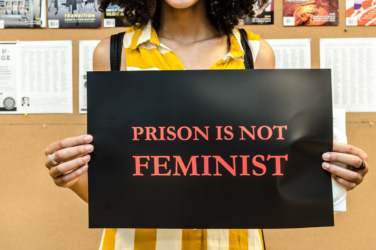Opioid pharma—manufacturers of medications designed to relieve pain—has been under the gun ever since the opioid-involved overdose crisis began. Most of the deaths now involve illicit opioids, like fentanyl and heroin. But the blaming of pharma companies for addiction and death has reached fever pitch with a series of high-profile lawsuits and vast settlements against Purdue Pharma and its ilk.
Everyone wants a piece of the proceeds. The Attorneys General prosecuting cases want money for their state coffers. Recovery and harm reduction organizations, which have often worked for years with no funding, want money so maybe some of them can finally get paid for what they do. Treatment and law enforcement interests are after it, too.
Meanwhile organizations that already got money from opioid pharma find themselves under fire. The UK National Portrait and Tate galleries have been among those to announce, under pressure, that they will no longer accept donations from the Sacklers, the owners of Purdue.
Public animosity against opioid pharma is palpable. News article after blog after speechifying lawmaker repeats: Lock ’em up, take the money, they got our children addicted and dead.
The hatred is everywhere. At progressive gatherings I hear the same sentiments. People who are opposed to incarceration per se badly want to put pharma execs in prison.
Deceptive marketing practices, of which many opioid companies are accused, are bad, and corporate accountability matters. At the same time, the thesis that the availability of drugs causes addiction is, at best, questionable.
Does all this fury have more to do with finding someone, somewhere to blame and punish than it does with a nuanced consideration of how best to help vulnerable people?
Attacks on Pharma-Funded Addiction Policy Forum
One of the people to be attacked for pharma funding was, of all people, Jessica Hulsey Nickel, head of the Addiction Policy Forum, who announced almost two years ago that her group had received a grant from Pharmaceutical Researchers and Manufacturers of America (PhRMA).
Nickel, a former lobbyist for Alkermes, maker of Vivitrol (not an opioid), immediately received harsh personal criticism. Most recently, anti-opioid group Fed Up called her appointment to the National Advisory Council on Drug Abuse, which advises the National Institute on Drug Abuse, “disgusting.” In February 2018, the New York Times published an article in which she was criticized for taking the funding. Randy Anderson, a recovery advocate based in Minnesota, has been a vocal critic, even heckling her from the back of the room at a Capitol Hill hearing.
But Andrew Kessler, principal with Slingshot Solutions, a behavioral health advocacy company, told Alcoholism & Drug Abuse Weekly back when APF announced its new funding, “If people don’t like who paid the freight, then don’t take part in the programs that will be funded as a result.”
“Our mission and our vision has a lot to do with ending the stigma of addiction,” Nickel told Filter recently. “You can’t do this by saying ‘stigma’ over and over again. You need to explain change and priorities, take the time to embed the health condition model in a lot of different places.”
Addiction Policy Forum’s PhRMA grant is to build a helpline and web portal with science-based information for impacted people “that is not skewed into one treatment modality,” Nickel said. “It has unbiased information that helps people when they’re having their toughest day.”
Nickel, a soft-spoken advocate, recalled the day in January 2000 when her father, who had struggled with heroin and crack cocaine for years, called her. “I had been waiting for this call since I was a little girl,” she said. “He said, ‘I need to be clean, I need to get off the street.’” But it was almost impossible to find treatment for him. She said she wants to fix that problem for others.
But opioid pharma has become so demonized that Nickel is enduring endless criticism of her work solely because of its funding source.
The public and political obsession with opioids is misguided, she noted, when many other drugs are involved in deaths, and the majority of opioid-related deaths involve opioids combined with other substances considered relatively benign. “We are so closed and focused on opioids that we are missing the big picture … we are ignoring the big elephant in the room, which is alcohol.”
Greed and Pain
The universal detestation of opioid pharma stems partly from public perceptions of the greed—often real, as in any for-profit industry—of Pharma generally.
“In recent years, drug companies have been portrayed by some as greedy for price hikes that were large and made without seeming justification, despite long-running industry arguments that prices fuel investment needed for innovation,” Ed Silverman, Pharma writer for STAT, told Filter. “The pharmaceutical industry has been unable to escape this criticism and as rising prices have become a pocketbook issue for many Americans, a growing number of lawmakers have been proposed all sorts of legislation to somehow lower costs for consumers/patients.”
Raising prices, said Silverman, has “hurt the industry’s image and, at times, hurt stock prices, although Wall Street seems to think it’s unlikely any significant legislation will become law while the impeachment inquiry and presidential campaign are front and center.”
Pharma profiteering is harmful—and increasing access to necessary medications is vital. When millions of pain patients—subject to invasive and onerous requirements, and frequently cut off from their meds—rely on being able to receive and afford opioids, what knock-on impact are the lawsuits, settlements and bankruptcies likely to have on them? And why are so few people willing to make this case?
Michael C. Barnes is aptly suited to answer this. A lawyer who got his start in the drug field working as confidential counsel for the Office of National Drug Control Policy in the Bush Administration, he currently counsels firms on regulation, social responsibility and other issues. Barnes has been a member of the advisory board for the Rx Drug Abuse and Heroin Summit since 2011, and is a past board member of the American Academy of Pain Medicine Foundation.
“Plaintiffs’ attorneys are digging in so deeply that defense counsel is saying, ‘Lock it down, don’t defend yourselves in the media, don’t go out and try to work with patient advocacy organizations,’” Barnes told Filter of the recent cases. “As a result, there isn’t a voice in the media.” Neither is there any counterbalance to the media stories quoting only Attorneys General, recovery organizations and anti-opioid zealots like Andrew Kolodny, MD (more on him later).
As for Nickel’s Addiction Policy Forum, Barnes simply said, “She takes the funding and she does good work with it, so more power to her.”
Barnes also faults the workers compensation industry. “They have been a leader in the movement to reduce or end the prescribing of opioid analgesics,” he said, citing 2011 cases in Pennsylvania and North Carolina in which workers comp companies were held liable for the deaths of workers who overdosed on prescribed opioids. The court rulings required compensation. This led to the workers comp industry advocating against opioid prescribing, said Barnes.
The Healthcare Distribution Alliance has been trying to make the public aware of certain facts, said Barnes, including how the overdose crisis is related to the “poor execution” of regulatory authorities aimed at reducing controlled-substance diversion, said Barnes—as recently exposed in a review by the Department of Justice’s Office of the Inspector General.
The news media—even liberal outlets like Vox that regularly publish stories about shutting down prisons and not targeting drug dealers—has universally vilified the Sacklers. Barnes argues that this is overblown.
“None of them said ‘Let’s kill people,’” he said, adding that the same is true of other pharma CEOs. That doesn’t rule out greed, recklessness or dishonesty. But Barnes believes that the prosecutions and public outcry lack all sense of proportion. “This is in one instance a money-grab by trial lawyers and politicians, and in the other a failure on the part of reporters and the public to think rationally about an emotional topic.”
“The blood-lust after the Sacklers is disturbing,” he said.
No one is saying that they did no wrong. The documents brought up in trials show they were doing all they could to sell their blockbuster painkiller while misleadingly downplaying its risks. And indeed, OxyContin was widely misused and involved in many deaths.
But selling as much of your new and successful product as possible is how pharmaceutical companies work. The critique that people are making here is really a critique of capitalism itself (in the context of inadequate regulation by policymakers, as the DOJ admitted)—which is a whole other article, or rather a library full of books. Capitalism currently exists, and regardless of our opinion of that, the real-world outcome of anti-opioid pharma feeling has been an effort to take opioids, the most effective painkiller known to the planet, away from people who need them.
Far more important than the fate of the Sacklers is the fate of millions of people in pain.
The Stories the Media Don’t Tell
Pat Anson, editor-in-chief of Pain News Network, has plenty of thoughts about why this story is being told in such black-and-white terms. “Multiple reasons,” he said.
“Part of it is just the overall weakening of journalism. Thirty years ago most major market newspapers and TV stations had a health reporter on staff with some medical background, contacts, sources, etc. As you know, that’s all changed. Complex health stories are now being done by general assignment reporters who are much less likely to drill down, ask questions and find new angles. So they follow the herd. That’s certainly been the case with the opioid crisis.”
Most stories about the “opioid epidemic” in mainstream media don’t even include pain patients. The vast majority have used them safely and responsibly for years, noted Anson. “It enables them to work, pay taxes, have families, socialize, clean the house and have some quality of life. Take opioids away and they are disabled and bedridden. Why do we rarely hear from these people? It’s lazy journalism.”
Instead you see ubiquitous quotes from Kolodny, politicians posing as medical experts, and a parent who lost a child to an overdose, said Anson. “All overdoses are tragic, but you don’t take medication away from a 65-year-old woman in Missouri with degenerative disc disease because a teenager in California got drunk at a party and died after someone gave them a pill. It makes no sense, but that’s what has happened.”
“People are getting Tylenol now for pain relief after major surgeries,” he added, “even though studies show that post-surgical patients rarely get addicted to opioids.”
In addition, few people who are prescribed opioids for chronic pain go on to develop opioid use disorders. The CDC affirms this, citing a number of studies that found the percentage of people who develop addiction after long-term opioid treatment in primary care as high as 26 percent and as low as 3 percent.
Andrew Kolodny, Anti-Opioid Zealot
Andrew Kolodny, MD, heads the advocacy group Physicians for Responsible Opioid Prescribing, and was the star witness in the Oklahoma trial against Johnson and Johnson. For many years he has been an anti-opioid icon who is a true believer in what he says—he isn’t doing it just for the money. He really is a zealot. (Still, he did get half a million dollars for his testimony.)
I know Kolodny and have interviewed him in the past. He’s on the wrong side of this argument, but we should recognize that he, too, has sometimes been unfairly treated in this war of extremes.
“People [who advocate for pain patients] despise Kolodny so much that they want to pick at him for every single possible thing,” said Barnes. “The fact is that kids are dying from opioid overdoses. It is a disaster. There does need to be some justice.” It’s just that “justice,” in this case, must not mean depriving people of medication.
Kolodny has also focused on eliminating the Sackler philanthropy. He wants all the universities, ballets, operas, art museums, and so on to give back every penny. This is absurd. There is, in my experience, no limit to his hatred of prescription opioids.
For years he has had one goal: reducing or eliminating opioid prescribing. He has been attacked, but he has also attacked. The main victims are pain patients. And people who consume news articles with no counterbalance.
Kolodny knows how to play the media game, said Anson. “When I first started covering chronic pain I’d reach out to him and he’d always promptly return my calls and give me a good quote. That’s catnip to a reporter on deadline and it’s why he gets quoted so often.”
But the tide turned. “Only later, when I learned more, started to report the patient side, and question what Kolodny was saying, did he get cold feet and stop returning my calls. If anyone challenges Kolodny, his default response is to claim they are somehow influenced or bought out by pharma. He’s leveled that charge against me and it’s BS.”
Silverman takes a cynical view of the vested-interests angle beloved of Kolodny and his allies: “In general, everyone has a vested interest in their actions. Malpractice lawyers may stand on soapboxes—and for good reason when a company may have hidden side effects or engaged in improper marketing—but they have financial incentives, of course, as well.”
Hypocrisy and Overreach
But that doesn’t mean there aren’t rules. “An attorney general is supposed to be serving the public,” said Silverman. “Although a high profile-case may further a career or keep someone in office, the motivation for filing lawsuits is supposed to be about protecting public interests.”
Anson doesn’t think the biggest story in the opioid crisis is Purdue Pharma, although they certainly share the blame. Instead, “It’s how other industries, trial lawyers and paid experts have publicized and profited from opioid hysteria. Billions of dollars have been made, some of it fraudulently, in drug and genetic testing, insurance, addiction treatment, invasive surgeries, medical devices and recycled drugs never meant to treat pain—all in the name of preventing addiction and overdoses.”
“And guess what?” he said. “We have more overdoses than ever because most people are dying from street drugs, not prescription opioids.”
The pain-patient community also lacks the organization to advocate as effectively as its opponents. There is no large professional organization like AARP or the American Cancer Society that represents or lobbies for pain patients.
“Instead you have dozens of non-profit or ad hoc advocacy groups,” said Anson, “almost all of which are poorly funded and have trouble getting heard. The few who have money are ineffective. I’ve gotten to know hundreds of patients, advocates and doctors who have dedicated their lives to exposing these issues. Many do it on their own dime and risk damaging themselves professionally and personally. They’ve reaffirmed my faith in human behavior and generosity. But everyone is doing their own thing and rowing the same boat in different directions.”
“It’s a lot less difficult to say, ‘My child was a victim of a predatory pharmaceutical company’ than to say ‘My child developed a substance use disorder,’” reflected Barnes. Blaming is a common way to process a tragic situation.
Barnes also cut to some inherent conflicts in the authorities’ current position: “‘OxyContin is bad, but we want ownership of Purdue’s profits, so let’s keep selling it’ will be a hard position to defend—if you’re ethical.”
Attorneys General want money from opioid pharma so their states can deal with the financial burden of the overdose crisis—which is significant. Yet with most overdoses now involving illicit fentanyl or heroin, the restrictions on prescription opioids were what resulted in the rise of more potent illicit ones. But that’s a tricky reality for prosecutors to grapple with.
“Legally, it’s not possible to say the defendants [opioid pharma] caused the financial burden to the states,” said Barnes. “There are too many intervening acts between the legal manufacturing of opioids and addiction.” So the cases would fail under traditional tort law related to negligent or intentional conduct, said Barnes. (A tort, in plain language, is a wrong.) In fact, he said, the lawsuits are using nuisance law (a public nuisance is, indeed, a kind of tort).
Nuisance law can be viewed as the “dog bark statutes,” explained Barnes. “Someone uses his or her property in a way that is problematic for a neighbor, and you can go after the neighbor.” In tort law addressing negligent or intentional misconduct, however, there has to be a “direct nexus between the activity and the harm.”
With prescription opioid harms, “there are many steps along the way, starting with the choice to prescribe and the choice to take the medication not as directed,” he continued. “There are many intervening actors. The pharmacy, the prescriber, the drug diverter, the DEA, even the patient.” It’s far from the straight cause-and-effect media narrative.
When nuisance laws are used to take on drugmakers on this scale, what might be next? Methadone that’s improperly used? Alcohol that’s consumed riskily or excessively?
“Other pharmaceutical companies should not be resting easy,” said Barnes. “These opioid cases are expanding nuisance law in a way that will devour traditional tort law and enrich plaintiffs’ attorneys in new ways. The cases threaten the makers of all prescription medications and any other products that can be abused.”
Barnes is a rare voice willing to say this. So how does he handle the anti-opioid climate in Washington and elsewhere? “I have to choose my audiences carefully, and just hush when I know that people have bought into certain arguments,” he said. “Everyone is going to be anti-opioid these days—until they have a car crash that breaks their pelvis, or a loved one gets cancer.”
Photo by Laurynas Mereckas via Unsplash.





Show Comments